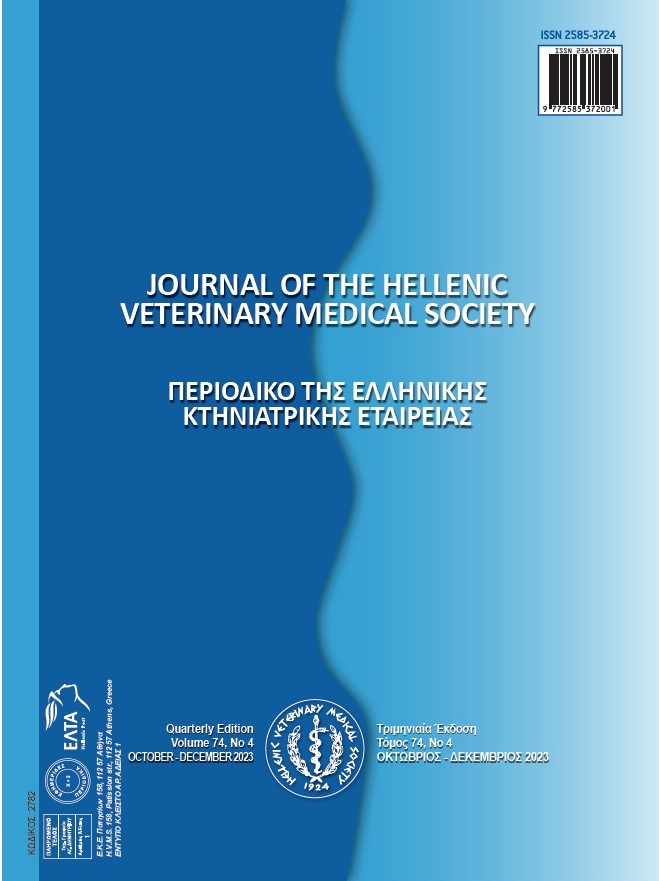Evaluation of serum ceruloplasmin to copper ratio in repeat breeder Holstein dairy cows
Resumen
Repeat breeder (RB) syndrome is one of the most important problems that affect reproductive performance in different parts of the world and has caused severe economic damage in the dairy industry. Primary and secondary copper deficiency is also a nutritional problem in some tropical regions that may be associated with an impaired reproductive function of dairy cows. This study aimed to evaluate the serum copper, ceruloplasmin (CP) and zinc values, ceruloplasmin to the copper ratio (CP/Cu), and superoxide dismutase (SOD) activity in RBs and their relationship with some reproductive markers in the studied cows. For this purpose, fifty RB and twenty healthy dairy cows were recruited. After blood sampling, serum copper, zinc, and CP concentrations, and SOD activity were determined. The number of open days, BCS, distance to the first insemination, and milk production were also assessed in all tested cows. No significant difference was observed between serum copper values in RB and healthy cows (p > 0.05). Although the serum CP value and SOD activity in the RB group were higher than in the healthy group, these differences were not insignificant. There was no significant difference in the CP/Cu ratio in the RB and healthy groups (p > 0.05). The reproductive markers were not significantly different between the groups. It does not seem that copper and zinc deficiencies play a role in the occurrence of RB syndrome. A slight increase in serum CP value and SOD activity in the sick compared with the healthy cows suggests that non-reproductive inflammatory factors, especially in high-yielding cows, may play a role in the pathogenesis of this syndrome.
Article Details
- Cómo citar
-
Azizipour, E., Makki, M., Nikvand, A., & Jalali, S. (2024). Evaluation of serum ceruloplasmin to copper ratio in repeat breeder Holstein dairy cows. Journal of the Hellenic Veterinary Medical Society, 75(1), 7155–7160. https://doi.org/10.12681/jhvms.34482
- Número
- Vol. 75 Núm. 1 (2024)
- Sección
- Research Articles

Esta obra está bajo una licencia internacional Creative Commons Atribución-NoComercial 4.0.
Authors who publish with this journal agree to the following terms:
· Authors retain copyright and grant the journal right of first publication with the work simultaneously licensed under a Creative Commons Attribution Non-Commercial License that allows others to share the work with an acknowledgement of the work's authorship and initial publication in this journal.
· Authors are able to enter into separate, additional contractual arrangements for the non-exclusive distribution of the journal's published version of the work (e.g. post it to an institutional repository or publish it in a book), with an acknowledgement of its initial publication in this journal.
· Authors are permitted and encouraged to post their work online (preferably in institutional repositories or on their website) prior to and during the submission process, as it can lead to productive exchanges, as well as earlier and greater citation of published work.





